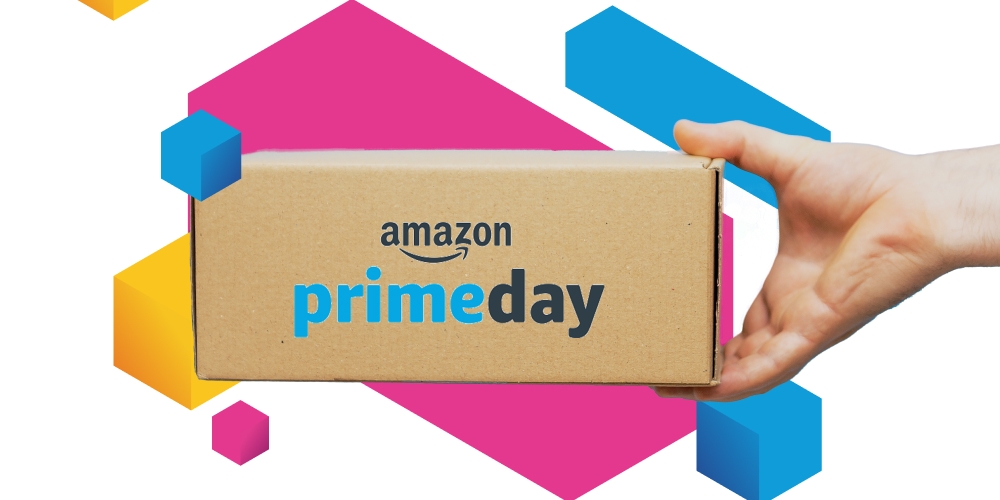Blog
A quick guide to preparing for Amazon's peak season
April 10, 2024
This comprehensive guide offers essential tips and key dates so you can prepare for Amazon peak seasons, highlighting the importance of strategic inventory management, optimization of product listings, and PPC campaigns plannings.
Reading Time - 8 min
Across Amazon, there's a boom in customer buying during peak season. This period is a golden opportunity for sellers as it's often their most profitable time of year. By anticipating these peaks, keeping inventory well-stocked, and running strategic promotions, sellers can seriously boost their sales during this busy time.
This guide will equip you with the knowledge you need to navigate Amazon's peak season. We'll provide you key dates and essential tips to help you take advantage of this high-stakes period. So, grab your calendars, and let's dive in!
When is Amazon’s peak season?
Amazon’s peak season typically runs from October to January and coincides with major holidays like Thanksgiving and Christmas. This time of the year also includes major promotion windows such as Black Friday, Cyber Monday, and Super Saturday. During this time, people tend to buy more, leading to a surge in orders for sellers on Amazon.
Key dates for Amazon sellers in 2024
Amazon's peak season is a golden opportunity, but savvy sellers can capitalize on year-round sales spikes by strategically timing promotions and optimizing listings for seasonal holidays and trends. Here are the most important dates that you need to add to your marketing calendar:
January
While holiday shopping takes center stage in December, many retailers extend the savings into the new year with discounts. Keep in mind that consumers are now accustomed to these post-holiday sales and have come to expect attractive deals throughout January. Unsurprisingly, products that support healthy New Year’s resolutions, like fitness equipment and health food items, often experience a surge in sales during this period.
- January 1st: New Year's Day
February
February is marked by two major retail events: Super Bowl Sunday and Valentine's Day. Get ready for touchdown sales in the lead-up to Super Bowl Sunday when jerseys, team gear, and party supplies fly off the shelves. Then, love takes center stage on Valentine's Day with chocolates, flowers, and jewelry on people’s shopping lists.
- February 10th: Chinese New Year
- February 11th: Super Bowl Sunday (US)
- February 14th: Valentine’s Day
March
March bursts onto the scene with warmer weather and a calendar full of global celebrations. From honoring amazing women on International Women's Day to the green-themed fun of St. Patrick's Day and the chocolatey joy of Easter, sellers can benefit from one of the many key dates in March:
- March 8th: International Women’s Day
- March 10th: Mother’s Day (UK)
- March 17th: St Patrick’s Day
- March 29th: Good Friday
- March 31st: Easter Sunday
April
During springtime, cleaning supplies and lighter clothes for the new season are popular picks for Amazon customers. If you sell planet-friendly products or gardening supplies, you should plan special promotions around the following two dates:
- April 22nd: Earth Day
- April 26th: Arbor Day
May
In May, Mother’s Day is another popular gift-giving holiday, making it a good time to promote products that mothers would appreciate, such as jewelry, clothing, and spa products. In the US there’s Memorial Day, which sees increased sales in outdoor products such as grills, pool floats, and camping gear.
- May 12th: Mother’s Day
- May 27th: Memorial Day (US)
June
June is the first official month of the summer season so expect shoppers to be in the market for swimwear, sunscreen, and travel gear. Pride Month also begins so it’s a good time to promote products that celebrate diversity and inclusion such as rainbow-themed products or LGBTQ+ books. Finally, Father’s day is the perfect opportunity to advertise gifts for men, such as tools, electronics, and outdoor gear.
- June 1-30: Pride Month
- June 16th: Father’s Day
- June 20th: Summer Solstice
July
July marks a major event for Amazon sellers: Prime Day. This annual two-day event, exclusive to Amazon Prime members, features deep discounts and deals across various product categories. Similar to the holiday season, Prime Day presents a golden opportunity to attract millions of enthusiastic shoppers seeking exclusive bargains.
July TBC: Prime Day
August / September
August signals the start of the back-to-school season, a time when parents and students gear up for the new school year. With shopping lists filled with essentials like stationery kits, backpacks, lunch boxes, and even electronic gadgets, it's a prime time to promote your back-to-school offerings.
October
Scary costumes, eerie decorations, spooky treats. There’s only one big holiday in October: Halloween. Sellers who are dedicated to Halloween merchandise often have sales on their products weeks in advance, offering a chance to grab them at discounted prices before the big day.
- October 31st: Halloween
November
Amazon’s traditional peak season gets underway in November, with Black Friday reigning as one of the biggest shopping days of the year. This global retail phenomenon, originating in the US, sees retailers worldwide offering significant discounts to ramp up sales. Many sellers now extend this marketing event to a 'Black Week', offering deals throughout the week leading up to Black Friday.
- November 11th: Singles’ Day
- November 28th: Thanksgiving (US)
- November 29th: Black Friday
December
December ushers in the peak of the holiday shopping season, with Amazon shoppers scrambling to find the perfect last-minute gifts. The season culminates in post-Christmas sales on Boxing Day and beyond, offering another chance for shoppers to snag amazing deals before the end of the year.
- December 2nd: Cyber Monday
- December 5th: Sinterklaas (The Netherlands)
- December 21st: Super Saturday
- December 26th: Boxing Day (in Canada and the UK)
Top tips for Amazon sellers to prepare for peak seasons
Peak season on Amazon can be quite challenging for sellers, with lots to manage. You'll need to be prepared to handle the increased demand and ensure your products are easily discoverable by potential buyers. Here are four helpful tips to get you ready for success during this crucial period:
1. Forecast your sales volume
While referencing your sales from the previous year is a good starting point, it's not the only factor to consider when estimating sales for the upcoming peak season. Look at sales trends over several past peak seasons to help you identify patterns for potential growth or decline. Additionally, consider any external factors that could impact your sales: are there any new market trends that could influence demand for your product? Are people buying more or less based on the current state of the economy?
2. Create a stock order plan
Once you have your sales forecast in hand, the next step is to create a stock order plan. The goal is to have just the right amount of stock on hand during peak times. You don't want to run out of popular items, but you also don't want to be stuck with a warehouse full of unsold products. Here's a handy tip: consider using the Just-in-Time (JIT) principle. This means ordering goods from suppliers to arrive just before you actually need them. This helps keep inventory levels low and reduces the risk of having too much or too little stock on hand.
3. Optimize your product listings
During peak season, the competition for shoppers' attention is fierce. That’s why you need to take steps to make your product listings stand out:
Think about crafting catchy titles that accurately reflect your product and include relevant keywords.
Showcase your offerings with high-quality images that capture different angles and highlight key features.
Encourage customer reviews, as they build trust and influence buying decisions.
Clearly list your product's benefits using easy-to-read language, and sprinkle relevant keywords throughout your descriptions for better search visibility.
For even greater efficiency, consider exploring tools like Channable's Amazon API, which can help synchronize your product information and stock across various platforms. This helps to ensure consistency and saves you time managing listings individually.
4. Plan your PPC campaigns in advance
To avoid missing out on any sales over the peak season, you’ll definitely want to run PPC campaigns such as Amazon Sponsored Product ads. But don’t be tempted to set up all of your campaigns a week before. By planning your PPC activities in advance (keyword research, ad schedule, strategic budget scheduling, etc.) you can make sure that you’re set up for success.
Tools like Channable's Amazon PPC tool can streamline this process, especially when managing campaigns for multiple products and languages at scale. Our Amazon Repricer automatically adjusts your prices in real-time to match (or beat) your competitors, while our bid tool automatically adjusts your bids based on real-time data, such as keyword performance and ad performance (ACoS, ROAS, etc.)
Get the most out of Amazon’s peak season with Channable
At Channable, we have a number of different products to help Amazon sellers maximize their success during peak seasons. From feed management and smart categorization to PPC optimization, our tools can help you optimize your product listings and create Amazon advertising campaigns at scale.
Sign up for a free trial to learn more about how Channable can help you grow your brand on the Amazon marketplace.
Related articles
Within category
Maximizing ROI: the pros and cons of running Amazon PPC campaignsOutsmart the competition: How to master competitive PPC analysisHow to Optimize Campaigns for your eCommerce WebsiteSimilar topics
A quick guide to selling on WalmartTaking your Amazon Advertising Strategy to the next level 7 expert tips to optimize Amazon PPC campaigns in 2024Features mentioned
PPC toolStay ahead of the curve
As we keep on improving Channable, we would like to share the latest developments with you.



